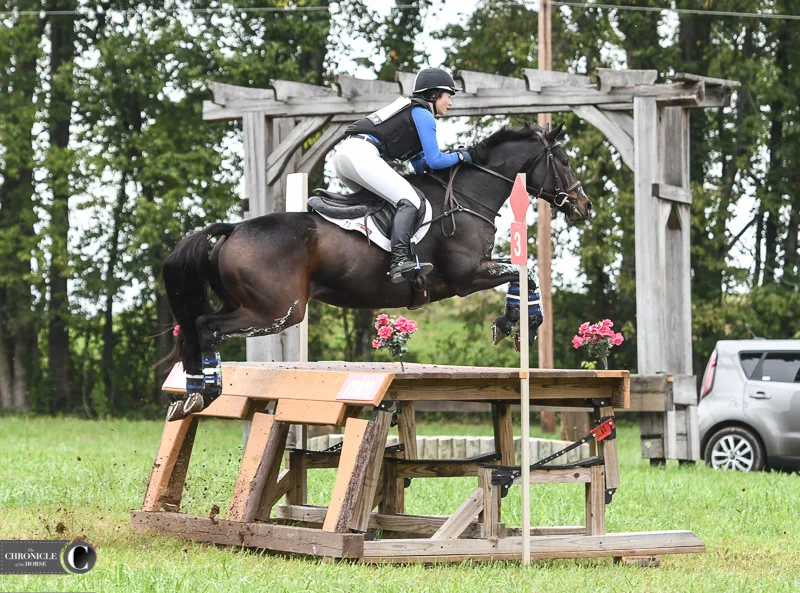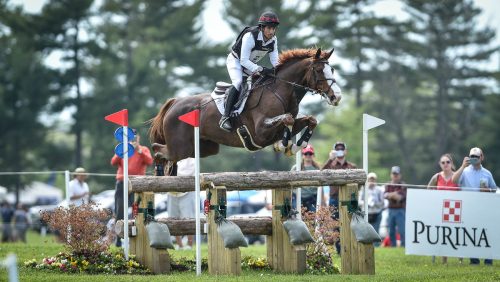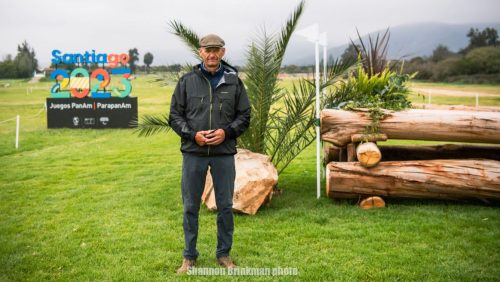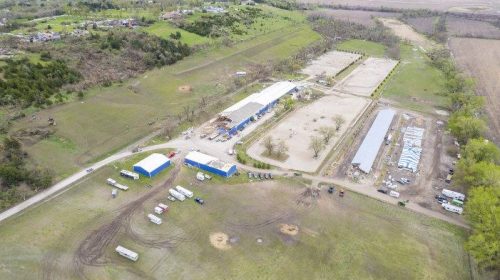In the wake of the death of Katharine Morel and her horse Kerry On at the Rocking Horse Winter III Horse Trials on Feb. 29, the U.S. Eventing Association Foundation and a group led by organizer and eventing official Andy Bowles have announced separate fundraising efforts to offset the costs of frangible devices.
Morel and Kerry On fell at fence 8 on the cross-country course, which was a table. The MIM system, a frangible technology that is widely in use for open oxers and gates, is available for tables but is rarely used in the United States due to cost.
“In our sport, we’ve done a lot of research around what technology we can use to help lower the risk—it doesn’t remove the risk, but it lowers it,” said Bowles, who organizes the Virginia Horse Trials and serves as a technical delegate at events across the country. “One of the issues we have is to actually implement this, it’s going to cost us a lot of money. Organizers throughout the country can’t fund this by themselves. It’s time that we remove the hurdle of funding. It’s not just about buying the frangible technology—that’s about a third of the cost of building that jump. A lot of tables can’t be retrofitted, or it’s cheaper to build a new one by the time you spend the time just dismantling and rebuilding. We as a country need to be able to fund this. Funding should not be a reason to not use the technology that’s out there and has been tested and approved.”

Allison Springer jumps a MIM table at the Morven Park Horse Trials in Virginia. Lindsay Berreth Photos
Bowles and his group, which includes Emily Holmes, Robert Kellerhouse, Jonathan Holling, Leslie Law, Kyle Carter and Doug Payne, estimates that a MIM table will cost $1,000 per jump depending on lumber costs for the location. In the U.S. there are 108 preliminary tracks, 50 intermediate tracks and 19 advanced tracks, plus other FEI tracks that will need to be factored in. Each preliminary track has a minimum of two tables, each intermediate has three, and each advanced has four, which would equal about $450,000.
The group has set up a GoFundMe with a target of $500,000, and so far they’ve raised $61,000 to be given to organizers throughout the country.
“My whole aim in setting up the group was not to remove what’s been done by USEA, because they’ve done some really good work up until now,” Bowles said. “We’re running parallel with them. We’ve got the same goal in mind, and that is making our sport safer.”
ADVERTISEMENT
While collapsible MIM tables are a relatively new technology, they have gone through FEI testing and are approved.
“It’s time to act,” said Bowles. “We have to do something. We can’t not do anything. It looks like a big number, but it really isn’t in the big scheme of things financially.”
The USEA Foundation has a Frangible Fence Technology Research Fund and raised $160,000 to fully fund a collapsible fence study led by Suzanne Smith, Ph.D., of the University Of Kentucky from 2016-2018. You can read about that study here.
USEA CEO Rob Burk said they had some money left over in that account and had already been discussing directing it to frangible fence distribution.
In recent weeks, the USEA has also taken over the technology distribution program and grants from the U.S. Equestrian Federation, which supplies course designers with frangible technology.
When run under the USEF, the program had $13,000 worth of grants available, and the USEA had matched that in recent years. Burk hopes the next step is to lower the costs.
ADVERTISEMENT
Since Morel’s accident, the USEA Foundation has received $9,500 in donations.
“We’re terribly saddened by this tragedy, and our thoughts are with all those that knew and loved Katharine and Kerry On,” said Burk. “It touches all of us so deeply, both across the USEA and the USEF. It’s always hard to put into words in times like this exactly how deeply it impacts us. The best way that I can think of that we can push forward is through initiatives like this one. Andy has been in contact with us to tell us that he was moving forward with this effort and a couple others who are involved as well. I think we’re all pulling in the same direction.”
Burk credited Holling, USEA’s chair of the Cross-Country Safety Subcommittee, with spearheading the efforts.
“Credit needs to go to Jon Holling for working so hard to direct his grief in a way that benefits all horses and riders competing in the United States,” Burk said. “His focus is obviously on tables and getting the MIM frangible systems on every table it possibly can in the United States. We’ve already been talking about working in a similar direction towards all frangible devices. We’re just so thankful to Jon and his efforts. Hopefully, those funds continue to grow, and we can continue to get risk reduction technology out to as many competitions as possible.”
Burk encouraged anyone to reach out to the USEA with questions. “During times of tragedy like this, I think everyone has questions, and we’re going to do our best to answer everything we can,” he said. “From a USEA standpoint, we are an educational association—that’s why we exist. For us, our intent is to learn as much as we can from this to continue to improve the sport.”















